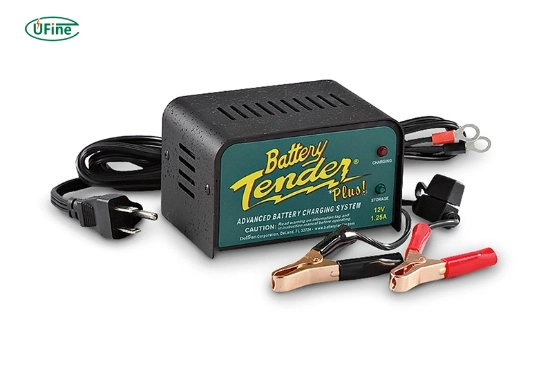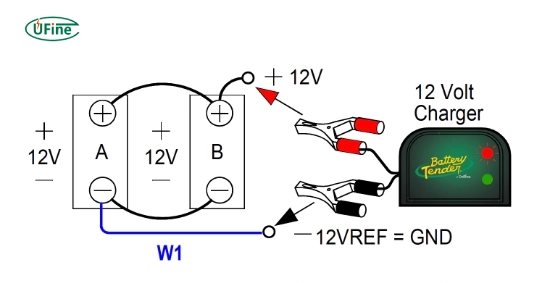
- Part 1. What is a motorcycle battery tender?
- Part 2. Why do you need a battery tender for your motorcycle?
- Part 3. How does a battery tender work?
- Part 4. Different types of battery tenders
- Part 5. Which battery type does your bike use?
- Part 6. Best motorcycle battery tender for different riding styles
- Part 7. Features to look for in the best battery tender
- Part 8. Top recommended battery tenders (2025 picks)
- Part 9. How to use a motorcycle battery tender safely?
- Part 10. Common battery tender mistakes to avoid
- Part 11. FAQs about best motorcycle battery tender
If you’re wondering which motorcycle battery tender is best for your riding style, the quick answer is that the best battery tender is one that matches your bike’s battery type, your riding frequency, and your storage habits. Whether you’re a daily commuter, weekend cruiser, or long-term tourer, choosing the right battery tender can extend battery life, prevent sulfation, and keep your bike ready to ride anytime.
In this detailed guide, we’ll break down everything you need to know about choosing the best motorcycle battery tender. From understanding how they work to matching one with your ride style, we’ve got your back.
Part 1. What is a motorcycle battery tender?
A motorcycle battery tender is a smart charger designed to maintain your battery at full charge without overcharging or damaging it. Unlike regular chargers, tenders use a microprocessor to monitor battery levels and automatically adjust the charging cycle.
They’re also known as trickle chargers, but modern tenders are much smarter. They keep your battery healthy during long periods of inactivity, like winter storage or between weekend rides.
Part 2. Why do you need a battery tender for your motorcycle?
Motorcycle batteries tend to lose charge faster than car batteries, especially if your bike sits unused for weeks. That’s because bikes often use smaller lead-acid or AGM batteries, which are more sensitive to discharges.
Here’s why a battery tender is essential:
- Prevents battery drain during storage
- Avoids deep discharges that shorten battery life
- Keeps your bike ready to start anytime
- Saves money by extending battery lifespan
If you’ve ever faced a dead battery on a sunny ride day, you know the frustration. A battery tender helps you avoid that.
Part 3. How does a battery tender work?
A battery tender connects to your motorcycle battery and delivers a low, safe charge. It works in stages:
- Initial charge: Brings the battery up to a full charge.
- Absorption mode: Maintains voltage while lowering current.
- Float mode: Keeps battery topped off without overcharging.
- Maintenance mode: Periodically checks and tops off the charge.
Most quality tenders have automatic shutoff and safety features to prevent sparks, overcharging, or overheating.
Part 4. Different types of battery tenders
There’s no one-size-fits-all when it comes to battery tenders. Here are the main types:
- Standard trickle chargers
- Cheap and simple
- Constant current
- Risk of overcharging if left too long
- Smart battery tenders
- Microprocessor-controlled
- Adjusts charging based on battery condition
- Safe for long-term use
- Solar battery tenders
- Great for off-grid or outdoor storage
- Eco-friendly
- Less powerful, but useful for maintenance
- Waterproof battery tenders
- Ideal for bikes stored outdoors or in humid places
- Fully sealed and weather-resistant
Knowing your storage conditions helps you choose the right one.
Part 5. Which battery type does your bike use?
Before buying a tender, check your motorcycle battery type:
- Lead-acid (wet-cell): Common and affordable
- AGM (Absorbed Glass Mat): More durable and spill-proof
- Gel: Similar to AGM, but more sensitive to overcharging
- Lithium-Ion (LiFePO4): Lightweight and high-performance
Important tip: Not all battery tenders are compatible with lithium batteries. Make sure the tender you choose supports your battery chemistry.
Part 6. Best motorcycle battery tender for different riding styles
Your riding habits play a big role in choosing the best battery tender.
- 🏍️ Daily Commuters
Best Option: Smart tender with fast recharge
You need a tender that quickly tops off your battery overnight. Look for auto shut-off and fast mode features. - 🛣️ Weekend Warriors
Best Option: Smart or solar tender
Your bike sits for days at a time. A smart tender keeps the battery topped off, while a solar version works well for sheds or outdoor storage. - 🧳 Touring Riders
Best Option: Portable and lightweight smart tender
If you ride cross-country, carry a compact tender. Lithium-compatible models are ideal for modern touring bikes. - ❄️ Seasonal Riders
Best Option: Long-term maintenance tender
If you store your bike for months in winter, pick a tender with a float mode and safety features like reverse polarity protection.
Part 7. Features to look for in the best battery tender
When shopping for the best motorcycle battery tender, look for these key features:
- Automatic shut-off
- Multi-stage charging
- Reverse polarity protection
- LED indicators
- Compatibility with multiple battery types
- Weather resistance
- Mounting options for easy use
These features ensure safe, reliable, and easy charging.
Part 8. Top recommended battery tenders (2025 picks)
Here are some of the most trusted battery tenders for motorcycles in 2025:
- Battery Tender Plus 1.25A
- Smart 4-stage charging
- Works with lead-acid, AGM, and gel
- Compact and reliable
- NOCO Genius 1
- Charges 6V and 12V batteries
- Compatible with lithium batteries
- Spark-proof and waterproof
- OptiMate 4 Dual Program
- Ideal for BMW and CANbus systems
- Fully automatic
- Deep-discharge recovery
- CTEK MXS 5.0
- Patented reconditioning mode
- Weatherproof
- Suitable for all battery types
These models are highly rated for safety, ease of use, and performance.
Part 9. How to use a motorcycle battery tender safely?
Using a battery tender is simple, but follow these safety steps:
- Read the manual: Different tenders have specific instructions.
- Turn off the bike: Always connect when the ignition is off.
- Connect positive then negative: Red to +, black to -.
- Plug in the tender: Check for LED indicators.
- Monitor occasionally: Look for error lights or overheating.
Never use a non-smart charger for long periods—it can damage your battery.
Part 10. Common battery tender mistakes to avoid
Avoid these common errors to keep your battery and tender in good shape:
- Leaving a dumb charger connected for too long
- Using a tender that’s not compatible with your battery chemistry
- Charging a frozen or overheated battery
- Ignoring connection polarity
- Storing the tender in wet or exposed areas
Pro tip: Always check your battery’s voltage before connecting a tender.
Part 11. FAQs about best motorcycle battery tender
Can I leave my battery tender on all winter?
Yes, if it’s a smart battery tender with float mode. These are designed for long-term storage and won’t overcharge.
Is it OK to start the motorcycle while the tender is connected?
It’s best to disconnect the tender before starting the bike to avoid electrical spikes or damage.
Can I use a car battery charger on my motorcycle?
No. Car chargers deliver higher amperage, which can damage smaller motorcycle batteries.
How long does it take to charge a dead motorcycle battery?
A smart tender may take 8–24 hours, depending on battery size and condition.
What happens if I use the wrong battery tender?
You could overcharge, undercharge, or even damage your battery. Always check compatibility.
Related Tags:
More Articles

Big Square Battery Safety Standards You Must Know
Learn key safety standards for big square batteries to avoid fire risks, shipping delays, and compliance issues in EV, industrial, and energy storage projects.
Big Square Battery Applications in Solar & Industrial Equipment
Big square batteries deliver high capacity, stable output, and long life for solar, industrial, and backup power. Explore key uses and advantages.
Big Square Battery vs Cylindrical Battery: Complete 2025 Guide for EVs, ESS & Industrial Devices
Choosing the right battery is key for designers and engineers. Compare big square vs cylindrical batteries to find the best fit for your application.
How to Choose the Right Big Square Battery for Your Device?
If you’re choosing a big square battery for EVs, solar, or mobility devices, this guide helps you pick the right solution for real-world needs.
Big Square Battery Complete Guide: Types, Uses & Buying Tips
If you are choosing a big square lithium battery for EVs, solar, RVs, or AGVs, this guide helps you select the right NMC, LFP, or LTO solution with examples.




